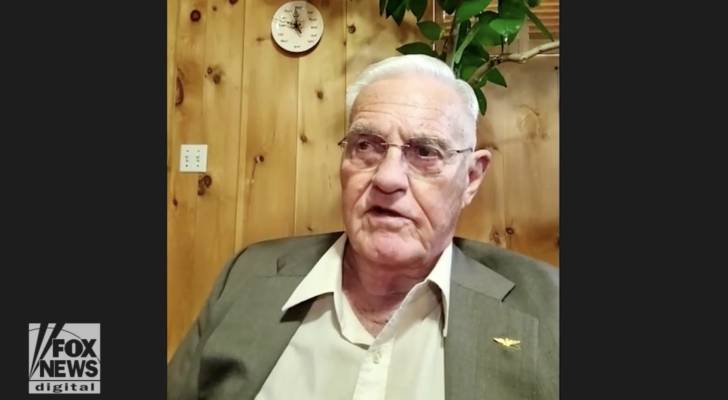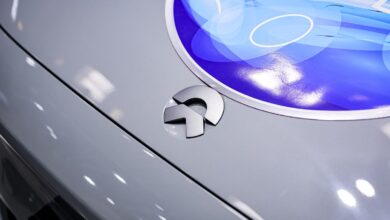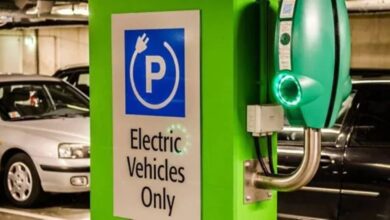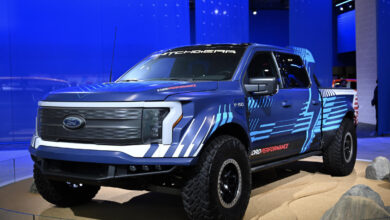Ex-honcho at GM, Ford and Chrysler says the EV movement in the US came ‘too soon, too fast’

Electric vehicle (EV) production in the United States came “too soon” and “too fast” according to automotive veteran Bob Lutz, a former executive at Ford, Chrysler and General Motors.
Featuring on Fox Business, Lutz said most major automotive executives agree that a steady EV “evolution” is preferable to a sudden EV “revolution.”
That’s because the country simply does not have the infrastructure — in terms of charging stations and capacity in the electrical grid — to support a quick and widespread transition to electric cars.
Don’t miss
-
These 5 magic money moves will boost you up America’s net worth ladder in 2024 — and you can complete each step within minutes. Here’s how
-
Thanks to Jeff Bezos, you can now use $100 to cash in on prime real estate — without the headache of being a landlord. Here’s how
-
‘It’s not taxed at all’: Warren Buffett shares the ‘best investment’ you can make when battling rising costs — take advantage today
Drivers who jumped on the EV bandwagon have discovered this infrastructure shortfall the hard way. Social media sites and internet forums are awash with complaints about poor EV range, the lack of public charging stations, and the hefty auto insurance costs, among other things — and that’s after they’ve already paid a premium for a fully-electric car.
But Lutz, who has a finger firmly on the pulse of this under–pressure industry, told Fox Business he thinks there is a solution to the nation’s EV challenges.
The EV ‘evolution’
The solution — “weirdly enough,” according to Lutz — is to refocus on hybrid vehicles, which came before all-electric vehicles, “then went out of favor and now they’re back.”
Hybrid vehicles experienced a global breakthrough in the early 2000s, when the Toyota Prius became the world’s first mass-produced hybrid EV. It was an instant hit due to its fuel efficiency and it quickly spawned a string of similar cars from competing manufacturers, like the Honda Insight, the Ford Fusion Hybrid and the Chevrolet Bolt.
That hybrid fervor had a blip when Tesla entered the market in 2006 and slowly released a series of luxury, all-electric vehicles.
“All-electric was much more appealing to the environmentally-minded people and the wealthy liberals with a social-change mindset on both the east coast and west coast of the U.S.” Lutz claimed. “They bought Teslas like they were going out of style.”
But despite cutting their CO2 emissions and possibly even enjoying EV tax credits, many owners of these green vehicles have quickly grown frustrated over the country’s slow progress towards building EV infrastructure.
These failures — which the federal government is trying to address — have pushed EV drivers back towards hybrid vehicles, according to Lutz.
Read more: Suze Orman says Americans are poorer than they think — but having a dream retirement is so much easier when you know these 3 simple money moves
An imperfect solution
Lutz said hybrid vehicles are a “wonderful … in-between step” in the EV evolution. They have proven successful at transporting Americans for a range of 20 to 50 miles, using the electric part of the engine — which satisfies “most trips for most people,” Lutz pointed out.
“And after that, you’ve got a gasoline engine and an internal combustion powertrain that’s going to take you on the rest of your trip and you never run out of electricity,” he added. “You can fill the [gas] tank in five minutes [and enjoy] all the wonderful advantages of internal combustion.”
But there is one major drawback when it comes to hybrids: the cost of production (which almost always transfers over to consumers).
“You’ve got an internal combustion drivetrain, a gasoline engine with all that entails, all the emission controls that are very expensive — and at the same time, you’ve got a lithium ion battery pack with all the control systems,” said Lutz.
“It takes an incredible engineering effort to get the electric powertrain and the gasoline powertrain to work seamlessly together so [drivers] can’t tell whether one is operating or the other.”
At the end of 2023, hybrid vehicles made up nearly 10% of new car sales, a proportion that’s more than doubled since 2020, according to the U.S. Energy Information Administration.
This leaves car makers with a difficult choice. There is clearly high demand for hybrids, but auto manufacturers in the U.S. must weigh up the costs of pivoting their businesses to make electric-powered cars (both hybrid and fully electric) against the strong sales for gas-powered cars and meeting shareholders’ demands for profitability.
Facing such a dilemma, Lutz thinks “for the immediate future, [hybrid is] the way electrification is going to play out.”
What to read next
This article provides information only and should not be construed as advice. It is provided without warranty of any kind.



